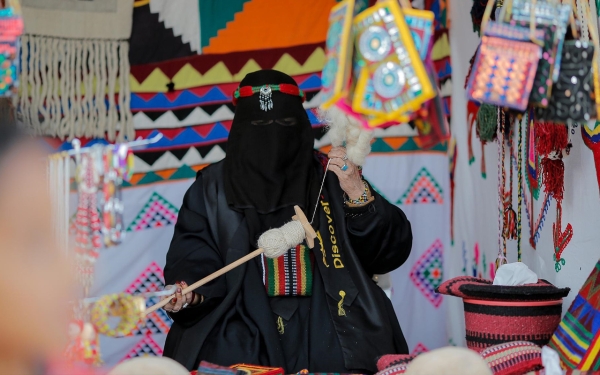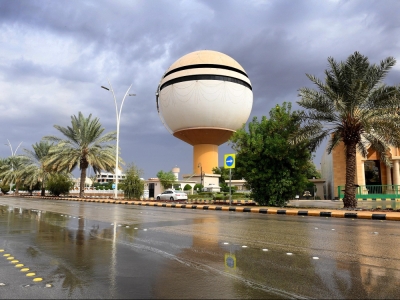
Al-Sadu traditional craft originated among Arab tribes who lived in the ancient Arabian Peninsula. Moreover, the Kingdom's handcrafting techniques helped it grow into one of the most well-known traditional arts in the Kingdom's history. It is now celebrated by the media and is a popular attraction at heritage and cultural festivals.
Al-Sadu registration in UNESCO
Al-Sadu is one of the Saudi heritage arts registered on the United Nations Educational, Scientific and Cultural Organization (UNESCO) Intangible Cultural World Heritage List in 2020.
The logo of the G20 2020 Presidency of the Kingdom of Saudi Arabia, which was held in the capital, Riyadh, included a visual symbol of the variegated strands of al-Sadu fabric. Al-Sadu's depiction in the logo stood for a symbolic allusion to the Saudi leadership and people's emphasis on realizing Saudi Vision 2030, as well as their commitment to honor their cultural heritage.
Women and al-Sadu weaving
Al-Sadu weaving shares a historical connection with al-Qatt al-Asiri Art, both of which have been practiced by Saudi women since ancient times. The representation of al-Sadu fabric also incorporates conventional geometric shapes, some of which express local connotations within the Arabian Peninsula and the symbols depicting camels.
Al-Sadu in Saudi Culture
Al-Sadu formed a cultural heritage that symbolizes women in the desert of the Arabian Peninsula in the Kingdom in general, especially in al-Jawf, in a way that is consistent with the lifestyle of desert areas known for their scarce resources.
Reason behind al-Sadu's name
Al-Sadu's designation reflected the practical meaning of the craft itself. In Arabic dictionaries, the word Sadu is defined as stretching the arm towards something, which refers to the initial stages of al-Sadu weaving. Practically speaking, al-Sadu weaver needs a wooden device known as the traditional loom, which helps in stretching and fixing the wool threads.
Al-Sadu products
Al-Sadu weaving produces a variety of home furnishings, including pillow covers and bedspreads. In larger spaces, al-Sadu can also be used to weave an entire tent, known as Bait al-Sha'ar in the local dialect. This is a physical indicator that the majority of the materials used for al-Sadu are taken and sheared from livestock, such as the wool of white sheep, known as al-Nuaimi, camel hair, or goat hair. The woolen fibers are cleaned and combed until they are ready to be rolled around a wooden instrument known as al-Tghazala.
Related quizzes
Related articles


